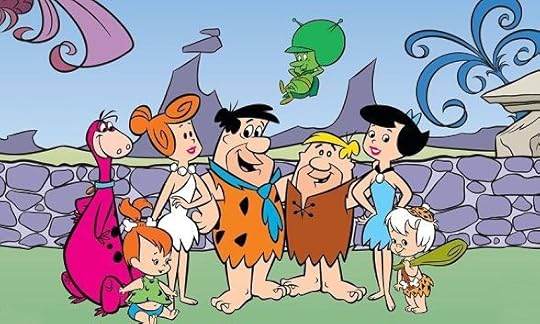Bathroom Readers' Institute's Blog, page 56
August 3, 2017
Death Customs
The treatment and disposal of a dead body is a sacred ritual in every culture, but each one does it a little bit differently. (This article first appeared in Uncle John’s Curiously Compelling Bathroom Reader .)

In India…
custom calls for a body to be burned on a funeral pyre near a riverbank and a temple; the ashes are thrown into the river. Some adherents to Zoroastrianism place bodies atop towers; after the flesh is eaten by vultures, the bones are thrown into a pit at the center of the tower.
In the Solomon Islands…
of the South Pacific, a body was traditionally placed on a reef where it would be eaten by sharks.
Inuit People…
constructed small igloos around a corpse (like an “ice tomb”). The cold protected and preserved the body (unless a polar bear found its way in).
The Navajo…
feared being haunted by the dead, so the body was burned and the deceased’s house was destroyed. On the way back from the funeral, relatives took a long, circuitous route to confuse the spirit into not following them.
A Viking Funeral…
At sunset, the dead man was placed on a small boat. As it drifted out to sea, it was lit on fire. If the color of the sunset was the same as that of the fire, it meant the deceased was bound for Valhalla (Viking heaven).
Muslims…
do not use caskets (unless required by law). The body is washed three times, wrapped in a white shroud, and placed directly in the ground with the head pointed toward Mecca.
The Iroquois…
buried corpses in shallow graves, but exhumed them after a few months. Relatives then placed the bones in a community burial plot.
In Modern Japan…
bodies are washed in a Buddhist temple, dressed (men in suits, women in kimonos), and put in a casket with a white kimono, sandals, and six coins, all for the spirit’s crossing into the afterlife. After a funeral, the body is cremated. Relatives pick bones out of the ash, put them in an urn, and bury it.
The post Death Customs appeared first on Trivia Books and Facts | Uncle John's Bathroom Reader.
August 1, 2017
About Antarctica

Cold, hard facts about the cold, hard continent. (This article was first published in Uncle John’s Triumphant 20th Anniversary Bathroom Reader .)

(1)
Antarctica isn’t completely covered in ice—98% of the continent is. The ice averages 1.34 miles thick, and is 3 miles at its thickest.
(2)
At 5.5 million square miles, Antarctica is the fifth largest continent (only Europe and Australia are smaller).
(3)
Antarctica is the driest continent. One region has received no precipitation for the last two million years.
(4)
The Bentley Subglacial Trench is 8,383 feet below sea level—the lowest dry location on Earth.
(5)
If Antarctica’s ice sheets melted, the world’s oceans would rise about 200 feet.
(6)
There are 145 liquid lakes (and counting) beneath the Antarctic ice. One, Lake Vostok, is under 2.5 miles of ice and is about the size of Lake Ontario.
(7)
The lowest temperature ever recorded on Earth was in 1983 at Russia’s Vostok Station: –128.6°F.
(8)
Cold, dense air being pulled by gravity down Antarctic mountains creates the most extreme katabatic (Greek for “go down”) winds on the planet. They have been clocked at 200 mph.
(9)
Antarctic ice accounts for 70% of the world’s fresh water.
(10)
The largest non-migratory land animal in Antarctica is the belgica, a wingless midge (gnat) less than half an inch long. They don’t fly (the winds would blow them away); they hop like fleas and live in penguin colonies.
(11)
The Antarctic Treaty, drawn up in 1959, reserves the continent for exploration and scientific research and prohibits its use for military purposes. To date, 45 countries have signed the charter, technically the first arms-reduction treaty of the Cold War.
(12)
Seven countries claim to own parts of the continent: Argentina, Australia, Chile, France, New Zealand, Norway, and the United Kingdom
The post About Antarctica appeared first on Trivia Books and Facts | Uncle John's Bathroom Reader.
Prime-Time TV’s Biggest Animated Flops

The Simpsons has been airing for nearly 30 years. South Park has been going for 20. Family Guy has been going strong for well over a decade. But not every prime-time cartoon aimed at an audience of mostly adults has such longevity.

Fish Police
Based on a relatively obscure comic book, CBS debuted this show on Friday nights in 1992 to compete with ABC’s family-friendly “TGIF” lineup of sitcoms like Full House and Family Matters. Except that Fish Police wasn’t exactly for kids, as it was filled with double entendres and it’s an homage to old film nor movies. The action focus on a detective named Gil (the voice of John Ritter) as he tries to solve crimes in the cleverly titled Fish City. That was also a big part of Fish City—the fish jokes. Characters included Mayor Cod, Detective Catfish, and Chief Abalone. Only three episodes of the show aired—“The Shell Game,” “A Fish Out of Water,” and “Beauty’s Only Fin Deep”—before Fish Police went belly up.
The Goode Family
Mike Judge has a track record for making successful TV shows, particularly animated TV shows—he created and voiced main characters on Beavis & Butt-head and King of the Hill. He’s also behind HBO’s tech satire Silicon Valley, but in 2009 he had his only real TV flop of his career with The Goode Family. If King of the Hill poked gentle fun at conservatives, The Goode Family took aim at liberals, centering on a family that was into saving the environment and being political correct…while always wondering if they were going green and being sensitive enough. (They also a vegan dog, who rebelled by eating pets around the neighborhood.) The Goode Family just didn’t resonate and was cancelled after 13 episodes of not-very-goode ratings.
As the Wrench Turns
Even PBS once aired a primetime cartoons. Based on Car Talk, the popular National Public Radio call-in show about car advice hosted by brothers Tom “Click” Magliozzi and Ray “Clack” Magliozzi, As the Wrench Turns was an animated sitcom about the brothers’ wacky misadventures. In one episode, they outsource their radio show to India and it goes poorly; in another, the brothers build a car that runs on pasta. Guest stars included PBS and NPR favorites like Garrison Keillor and Jim Lehrer—in other words, this was a cartoon for people who probably didn’t watch a lot of cartoons. As the Wrench Turns aired over just five weeks in the summer of 2008 before it sputtered out.
Game Over
One of first computer-animated primetime cartoons was this show that aired on the now-defunct UPN in 2004. The premise: what video game characters do after the video games are turned off. Specifically, it followed a family called the Smashenburns—Dad was a driver in a racing game, Mom was a send-up of Lara Croft from Tomb Raider, and a family of kung fu fighters lived next door. Fans of video games seemed to prefer playing video games to watching a show about them, because it was game over for Game Over after five episodes.
The post Prime-Time TV’s Biggest Animated Flops appeared first on Trivia Books and Facts | Uncle John's Bathroom Reader.
July 31, 2017
True Tales of Rejection and Redemption

What comes before success? Preparation, practice…and rejection. Here are some people who went on to do big things despite some early roadblocks.

The Country Singer
Rock and roll, at least in its early days, was inspired by equal parts country-and-western music and rhythm-and-blues music. The genre was just emerging in 1954, so when a young, Mississippi-born singer who considered himself more of a country guy, he went where country musicians went, both then and now: the Grand Ole Opry in Nashville. The singer managed to land himself a spot performing at the famed venue, but after one show, he was told never to come back. One of the organizers even told him that he should go back to his day job of driving a truck. Later that year, the same singer didn’t pass his audition for the TV talent showcase Arthur Godfrey’s Talent Scouts, losing to Pat Boone. So did he go back to driving a truck? No—Elvis Presley did okay in the music business.
The Engineer
After earning a master’s degree in mechanical engineering from the illustrious Massachusetts Institute of Technology, this guy took a job as a senior product design engineer in Boston. But what he really wanted to be was a musician. So, over the course of several years in the early ‘70s, the engineer built a state-of-the-art recording studio in his basement and recorded a full album of demos of songs he’d written. (He was also an accomplished guitarist.) The engineer shopped the full album, which sounded almost as good as a professionally recorded and mixed album, was nevertheless rejected by every major music company. Undaunted, he sent it back to Epic Records for another look. They made him re-record only a few parts of his DIY record, which was released in 1976. The engineer was Tom Scholz, and he called the band Boston. The self-titled album went on to sell 25 million copies.
The Children’s Book Author
In 1976, a young illustrator sent a rough copy of his first children’s book, a fantastical story called The Giant Zlig, to a number of publishers for consideration. While most rejection letters are brief (little more than a “thank you for your submission, but no thanks”), one publisher took their time with the illustrator to go over the manuscript with the 17-year-old budding author, pointing out its flaws as well as its strengths. “The story is simple enough for a young audience, cute, and shows a grasp of the language much better than I would expect from one of today’s high school students.” However, the writer of the letter also finds it “too derivative of the Seuss works to be marketable.” While the author has written some books, it’s for some other works that he’s best known. The Giant Zlig was written by filmmaker and animator Tim Burton.
The post True Tales of Rejection and Redemption appeared first on Trivia Books and Facts | Uncle John's Bathroom Reader.
July 28, 2017
QUIZ: The 10-Scoop Ice Cream Quiz

#fca_qc_quiz_35115 button.fca_qc_button {
background-color: #58afa2;
box-shadow: 0 2px 0 0 #3c7d73;
}
#fca_qc_quiz_35115 button.fca_qc_button:hover {
background-color: #3c7d73;
}
#fca_qc_quiz_35115 div.fca_qc_answer_div.fakehover,
#fca_qc_quiz_35115 div.fca_qc_answer_div:active {
background-color: #8dc8bf;
}
Quiz: The 10-Scoop Ice Cream Quiz
I scream. You scream. We all scream for…online trivia quizzes about ice cream!
See how well you do on this quiz, and then we bet you’ll help yourself to a
bowl of the ideal summer treat.

Start Quiz
Question
[image error][image error][image error][image error][image error][image error]
Your answer:
Correct answer:
NextYou got {{SCORE_CORRECT}} out of {{SCORE_TOTAL}}
[image error]SHARE YOUR RESULTSTweetPinEmailYour Answers
Retake Quiz
The post QUIZ: The 10-Scoop Ice Cream Quiz appeared first on Trivia Books and Facts | Uncle John's Bathroom Reader.
July 27, 2017
Famous Dropouts

Quitters never win…or do they? (This article was first published in Uncle John’s Fast-Acting, Long-Lasting Bathroom Reader .)

Absent Anchors
Peter Jennings was a poor student in high school and only lasted until 10th grade. Tom Brokaw, the president of the student body in high school, dropped out of the University of Iowa after, as he put it, he “majored in beer and coeds for a couple of years.”
Wayward Writers
Although their books are required reading in many high schools and universities, but neither Charles Dickens, Joseph Conrad, Herman Melville, George Bernard Shaw, William Faulkner, nor Jack London finished school themselves.
Class-Cutting Commanders
U.S. presidents George Washington, Abraham Lincoln, Andrew Jackson, Martin van Buren, and Grover Cleveland all had little or no formal education. British Prime Minister John Major didn’t finish high school.
Forbes-List Flunkies
Microsoft’s Bill Gates, the richest man in the world, was a college dropout. John D. Rockefeller never finished high school. Neither did Andrew Carnegie, Henry Ford, or Virgin’s Richard Branson. Dave Thomas of Wendy’s and Ray Kroc of McDonald’s also dropped out—but they got jobs in fast food.
Errant Entertainers
Robert De Niro, Humphrey Bogart, Sean Connery, Walt Disney, Quentin Tarantino, and Patrick Stewart never finished school. Musical misfits include Frank Sinatra, Elton John, and composers Irving Berlin and George Gershwin. Sonny Bono, who later became a U.S. congressman, dropped out of school in the 10th grade.
Non-Passing Pioneers
Wilbur and Orville Wright were dropouts. Thomas Edison left school to educate himself, as did Albert Einstein. However, the rumor that Einstein flunked math is not true. In fact, he earned high grades, and was ahead of his class in many subjects. Still, his teachers did not think he was an especially brilliant student. Einstein did go back to earn a doctorate of Physics in 1905, but later offered this warning: “If one studies too zealously, one easily loses his pants.”
The post Famous Dropouts appeared first on Trivia Books and Facts | Uncle John's Bathroom Reader.
July 18, 2017
Dumb Crooks

Even more proof that crime doesn’t pay. (This article was first published in Uncle John’s Triumphant 20th Anniversary Bathroom Reader .)

Next Time, Take off the Blinders
“In November 2006, Derek Pierson tried to rob a Shreveport, Louisiana, convenience store. He walked in, looked directly at the clerk and told her to ‘give (the money) up.’ What he didn’t notice was that a member of an armed robbery task force—wearing a shirt marked ‘Shreveport Police’ on the front and back as well as ‘Police’ on the sleeves—was standing in an aisle 10 feet away. The agent, who had stopped by on a routine check, pulled his gun and arrested Pierson without incident. The officer described him as looking ‘like a deer caught in the headlights.’ ‘I guess I picked the wrong place,’ Pierson told police. He faces up to 10 years in prison.”
—Shreveport Times
Talking Trash
“Minutes after getting a report of two men trying to break into a parking meter, police began looking for suspects. It wasn’t hard. Witnesses say one of the suspects wore an all-black outfit, while the other was dressed in a bathrobe. Police located one likely suspect near the scene of the crime. They began searching the neighborhood for a second suspect when they were attracted to a garbage dumpster by the sound of a ringing cell phone. When officers lifted the lid of the bin, they found the second man inside. Both suspects were taken into custody without incident.”
—Halifax Daily News
Ignoring the Rule of Thumb
“A robbery at a Git-N-Go Convenience Store on the south side of Des Moines was called off for lack of convincing theatrics. ‘Well, I could tell he didn’t have a gun,’ said Terry Cook, a clerk at the store. ‘I knew it was his finger. I could see his thumb sticking out of his coat pocket.’ The would-be robber, who acted tough and even inserted a harsh expletive in his demand for cash, wanted to argue. ‘It is a gun,’ he told Cook. ‘No it isn’t,’ Cook replied. The frustrated suspect left the store but paused a moment in the parking lot, perhaps to go over in his mind the argument he’d just lost. He left the scene just before police arrived.”
—DribbleGlass.com
Thief-Tracking Made Easier
“Kurt Husfeldt, 46, and two others were arrested in Lindenhurst, New York, in January 2007 in possession of 14 stolen electronic devices that they apparently assumed were cell phones. However, they were global positioning devices from a nearby municipal facility, and police had followed their signals to Husfeldt’s home.”
—News of the Weird
Googled
“Kevin Fitzpatrick, 32, was arrested in connection with a 2005 bank robbery after leaving a trail of cyberclues. Police said Fitzpatrick was staying with a woman at the time of the Norwich robbery and spent a great deal of time on her computer. He borrowed her car the day of the robbery and returned with a lot of cash, claiming he won it at a casino. Police say Fitzpatrick walked into a Liberty Bank branch and handed a teller a note demanding money. A week later, the woman friend contacted police, saying she recognized Fitzpatrick from a surveillance photo on a newspaper Web site. A police search of the computer revealed numerous searches concerning bank robberies, including one for ‘Norwich bank robbery’ and another for ‘how to rob a bank.’”
—Associated Press
Banks For Telling Me
“A would-be robber was arrested after he tried to hold up his local town hall, mistaking it for a bank, Austrian police said. Wearing a mask and waving a toy pistol, the unemployed man burst into the town hall in the village of Poggersdorf and shouted, ‘Hold-up, holdup!’ The building has a sign indicating there is an ATM on the outside wall, police said. He realized his mistake when an employee explained to him where he was, and then fled to a nearby woods. The 34-year-old man was arrested when he came back later to pick up his motorbike, which he had parked outside the town hall.”
The post Dumb Crooks appeared first on Trivia Books and Facts | Uncle John's Bathroom Reader.
Super Bowl Halftime Shows

More than 50 years after the first Super Bowl broadcast, the halftime show is no longer just something to fill TV airtime while the football players rest—it’s now a spectacle unto itself. Here are some highlights. (This article first appeared in Uncle John’s Fast-Acting, Long-Lasting Bathroom Reader .)

HUT HUT HUT!
1967
Marching bands from the universities of Arizona and Michigan perform.
1970
The NFL experiments with big-name celebrity halftime entertainers. Their first big star: Carol Channing.
1972
“A Salute to Louis Armstrong,” with Ella Fitzgerald, Al Hirt, the U.S. Marine Corps Drill Team…and Carol Channing. Armstrong had died the previous summer. Songs included “High Society” and “Hello, Dolly.”
1976
Up With People, a “clean-cut” troupe of young dancers and singers, kicks off the yearlong American bicentennial celebration with a collection of patriotic songs called “200 Years and Just a Baby.” Up With People returned in 1980 (“Salute to the Big Band Era”), in 1982 (“Salute to the ’60s”), and in 1986 (“The Beat of the Future,” ironically, their last Super Bowl appearance).
1988
Chubby Checker sings “The Super Bowl Twist” while the Rockettes dance on a giant grand piano–shaped stage. The rest of the field is filled with 88 grand pianos. The occasion: it’s 1988.
1990
“A Salute to New Orleans and Snoopy’s 40th Birthday,” combines New Orleans musicians (clarinetist Pete Fountain, Cajun fiddler Doug Kershaw, and blues singer Irma Thomas) with 400 dancers, a 500-voice choir, marching bands from three Louisiana colleges, and actors dressed up like characters from the Peanuts comic strip.
1992
To promote the upcoming Winter Olympics (to be broadcast, like the 1992 Super Bowl, on CBS), Brian Boitano and Dorothy Hamill figure skate while Gloria Estefan sings a song called “Pump It Up, Frosty.”
1993
Michael Jackson sings “Heal the World,” accompanied by a choir of 3,500 children.
1995
Disney produces the halftime show, which they use to promote a new Indiana Jones–themed ride at Disneyland with an Indiana Jones–themed show, featuring Patti LaBelle, Tony Bennett, Arturo Sandoval, Miami Sound Machine, and 1,000 dancers.
1998
“A Salute to Motown’s 40th Anniversary” concludes with Boyz II Men, Smokey Robinson, Martha Reeves, the Temptations, and Queen Latifah all singing “Dancing in the Streets” together.
2003
Shania Twain performs “Man! I Feel Like a Woman” but is accused of lip-synching.
2004
Justin Timberlake and Janet Jackson play Timberlake’s hit “Rock Your Body.” Jackson’s “wardrobe malfunction” introduces a new phrase into the lexicon.
2005
Paul McCartney sings “Drive My Car,” “Get Back,” “Live and Let Die,” and “Hey Jude” (without lip-synching or exposing himself).
2013
Byoncé brought the house down with a much anticipated Destiny’s Child reunion.
2017
Lady Gaga gets a record of 6 Emmy nominations for the half-time show.
The post Super Bowl Halftime Shows appeared first on Trivia Books and Facts | Uncle John's Bathroom Reader.
Nudes and Prudes

So what side of the debate do you take—are you offended by public nudity, or are you offended by people who are offended by it? (This article was first published in Uncle John’s Fast-Acting, Long-Lasting Bathroom Reader .)

Gentleman’s Club Art Nights
When the Boise, Idaho, City Council passed an ordinance outlawing total nudity in public except in cases of “serious artistic merit,” Erotic City Gentleman’s Club (a strip joint) responded with “Art Nights.” On Monday and Tuesday nights they passed out sketchpads and pencils so that patrons could draw the strippers as they danced. “We had a lot of people,” owner Chris Teague told reporters, “drawing some very good pictures.”
So did Art Night work? Nope: In April 2005, Boise police raided Erotic City on Art Night and cited three of the nude dancers. “The law clearly states that the exemption does not apply to adult businesses,” says Lynn Hightower, spokesperson for the Boise Police Department. “If it were an art studio and models were actually posing, that would be one thing. These women weren’t posing.” Erotic City says it will fight the charges in court…but the dancers will have to wear pasties and G-strings until further notice.
Classical Statue
When Stu Smailes died in 2002 at the age of 69, he left the city of Seattle $1 million to buy a new fountain. There’s a catch—Smailes’s will stipulates that in order for Seattle to claim the money, the fountain must include “one or more unclothed, life-size male figure(s).” Furthermore, it must be designed in “the classical style”—in other words, no cheating by making it unrecognizably abstract. “Smailes was a very funny man,” said his attorney, Tim Bradbury. “He had a very strong sense of humor.”
Supreme Court in the Nude
Satirical news anchor Jon Stewart’s book America (The Book) spent more than 15 weeks on the New York Times bestseller list and was named Book of the Year by Publishers Weekly magazine… but that didn’t stop eight southern Mississippi libraries from banning it. Reason: the satirical book contains a phony photograph of all nine Supreme Court justices in the nude. “We’re not an adult bookstore,” says Robert Willits, director of the Jackson-George Regional Library System. “Our collection is open to the entire public.”
Propositioning a Cop
As of January 2005, the Houston Police Department is relaxing its requirement that undercover vice officers remain fully clothed while trying to bust brothels that masquerade as spas, massage parlors, and “stress relief clinics.” The no-nudity policy made it easy for the prostitutes to spot undercover cops: all they had to do was ask customers to disrobe before propositioning them—anyone who didn’t was obviously a cop. Now, says Harris County District Attorney Ted Wilson, disrobing “is something the officers can do, if necessary, to gather sufficient evidence.”
Shaking Behinds
In March 2005, Texas State Representative Al Edwards introduced a bill in the state legislature to reduce funding to state schools that permit “sexually suggestive” cheerleading at athletic events. “It’s just too sexually oriented, you know, the way they’re shaking their behinds and going on, breaking it down,” Edwards told a reporter. “And then we say to them, ‘Don’t get involved in sex unless it’s marriage or love, it’s dangerous out there.’ And yet the teachers and directors are helping them to go through those kinds of gyrations.”
Naked News
Tired of watching CNN and Fox News? If you live in Europe and subscribe to satellite TV, now you can watch Naked News on the Get Lucky TV channel. On Naked News, strippers read the news as they strip. Caveat: if the news is really bad, you won’t get to see much nudity. “We are quite sensitive to certain issues, one, of course, being death,” says stripper/news anchor Samantha Page. “We try to be as respectful as we can, and what we tend to do is leave our clothes on.”
Naked Karaoke
In 2003 the owner of the Station Cafe in Berlin, Connecticut, posted a gag sign outside his business advertising “Naked Karaoke.” The bar owner, Marty St. Pierre, was only joking, but when the town hall threatened to fine and even arrest him if he held the event, he decided to fight back. He filed suit against the town and won…and attracted more than 120 participants to his first Naked Karaoke night.
The post Nudes and Prudes appeared first on Trivia Books and Facts | Uncle John's Bathroom Reader.
July 17, 2017
They Changed the Theme Song?
Theme songs are literally an introduction to a TV show. They set the tone, give a little information about the characters and plot…and then get stuck in your head forever. Several have become so ingrained in the collective consciousness that it’s been almost totally forgotten that they weren’t the series’ original theme songs.

The Flintstones
You may not have watched The Flintstones in years, but you could probably sing the whole theme song right now, off the top of your head. (“Flintstones, meet the Flintstones, they’re the modern Stone-Age Family…”) But this song wasn’t introduced until 1962—at the beginning of the third season of the show. Up until that point, the show used a bouncy but generic instrumental tune that makes no mention of Fred Flintstone whatsoever.
Happy Days
The retro, ’50s-set sitcom Happy Days was such a cultural phenomenon in the mid-’70s that its retro, ’50s-sounding theme song, the cleverly titled “Happy Days,” went to #5 on the pop chart by its performers, a duo called Pratt & McClain. But at first, this song was heard for only a few seconds over the show’s end credits. It was made the official theme in the third season of Happy Days‘s long run. Before that, an actual song from the ’50s was used: “Rock Around the Clock” by Bill Haley and His Comets.
I Dream of Jeannie
The well-known theme song to ’60s supernatural sitcom I Dream of Jeannie by Buddy Kaye and Hugo Montenegro has no lyrics, but it’s hummable (and danceable) nonetheless. It replaced the original, drums-and-horns theme song by composer Richard Wess. It was also instrumental and catchy…just not as catchy.
The Twilight Zone
The creepy, foreboding musical motif (it’s not quite a song) at the beginning of The Twilight Zone was just as creepy and foreboding as the show itself, making the composition by experimental French composer Marius Constant the perfect way to begin the show. Constant’s music was not a constant, however, being added on to episodes in the series’ second season. Before that, famed film composer Bernard Hermann (Psycho) had contributed a now-forgotten piece of theme music.
The post They Changed the Theme Song? appeared first on Trivia Books and Facts | Uncle John's Bathroom Reader.






